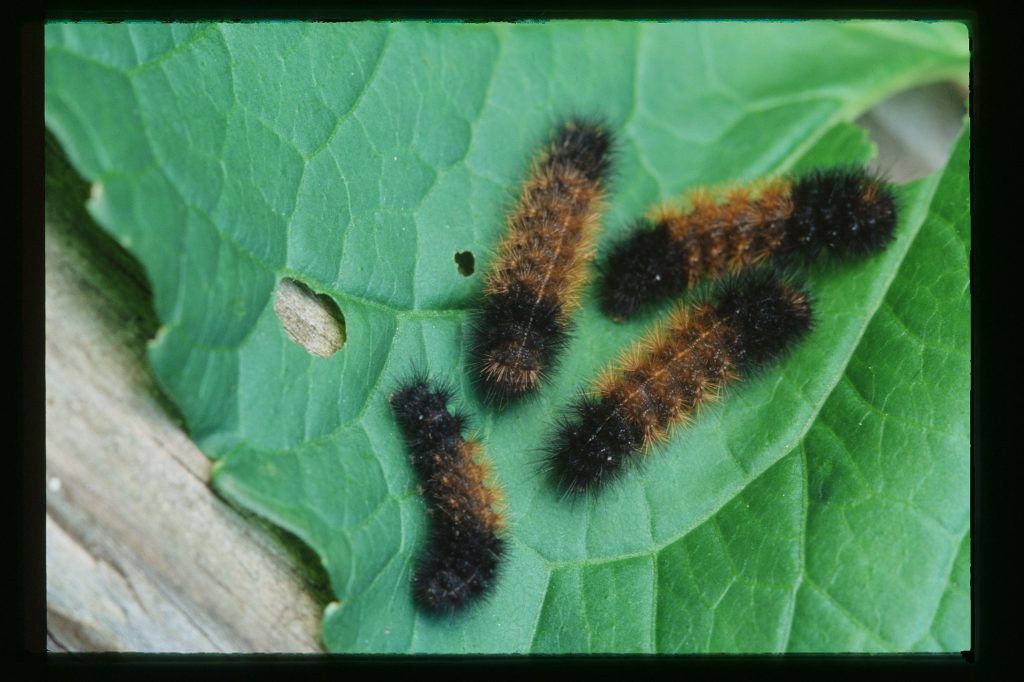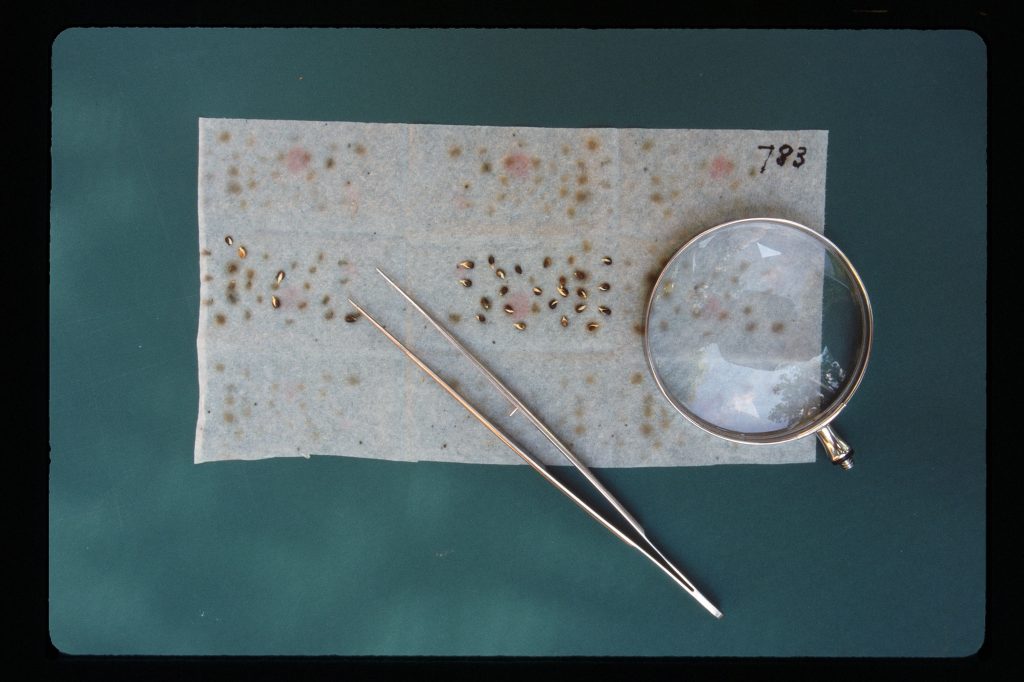


Fritillary butterflies
Viola adunca: Zerene Fritillary, Atlantis Fritillary, Hydaspe Fritillary, Mormon Fritillary
V. lobata is host to the Zerene Fritillary butterfly (Speyeria zerene [Boisduval])
Females lay eggs on leaf litter in late summer to autumn near violet plants; unfed first-stage caterpillars over-winter on a silken mat. In the spring, caterpillars feed on leaves of violets: Viola adunca, V. lobata, V. cuneata, V. nuttallii, and V. purpurea.
Mormon Fritillary (Speyeria mormonia [Boisduval])
Females lay eggs singly on leaf litter near host plants. Caterpillars hatch but do not feed, hibernating until spring when they eat the host leaves.
Caterpillar hosts: Violets including Viola adunca, V. nuttallii, V. nephrophylla, and V. palustris.
References:
Opler, P. A. and G. O. Krizek. 1984. Butterflies east of the Great Plains. Johns Hopkins University Press, Baltimore. 294 pages, 54 color plates.
Opler, P. A. and V. Malikul. 1992. A field guide to eastern butterflies. Peterson field guide #4. Houghton-Mifflin Co., Boston. 396 pages, 48 color plates.
Scott, J. A. 1986. The butterflies of North America. Stanford University Press, Stanford, Calif. 583 pages, 64 color plates.
Tilden, J. W. 1986. A field guide to western butterflies. Houghton-Mifflin Co., Boston, Mass. 370 pages, 23 color plates.
Author: Jane M. Struttmann
Reference for above information is website: USGS Butterflies of N. America: www.npwrc.usgs.gov. Also for below:
Edwards’ Fritillary (Speyeria edwardsii [Reakirt])
Wing span: 2 1/2 – 3 3/8 inches (6.3 – 8.6 cm).
Identification: Upperside of both wings tawny orange with black border and markings. Underside green or gray-green with narrow buff submarginal band and metallic silver markings.
Life history: Males patrol in open areas for females. Females lay eggs on litter near violets. First-stage unfed caterpillars hibernate; in the spring they eat host plant leaves.
Flight: One brood from late June to early September.
Caterpillar hosts: Violets including Viola nuttallii and V. adunca.
Adult food: Flower nectar.
Habitat: Short-grass prairie, foothills, meadows, fields, road edges.
Range: Short-grass prairie and western Rocky Mountains from southern Alberta east to the central Dakotas and western Nebraska, then south to northeastern New Mexico
Zerene Fritillary (Speyeria zerene [Boisduval])
Wing span: 2 1/8 – 2 3/4 inches (5.4 – 7 cm).
Identification: Upper surface of both wings tawny to red-brown with dark markings. Underside of hindwing has silvered or unsilvered marginal spots more triangular than those of Speyeria coronis.
Life history: Males patrol all day seeking females. Females may delay egg-laying until late summer. Eggs are laid on leaf litter near violets; unfed first-stage caterpillars overwinter on a silken mat. In the spring, caterpillars feed on leaves of violets.
Flight: One brood from mid-June to early September.
Caterpillar hosts: Violets including Viola adunca, V. lobata, V. cuneata, V. nuttallii, and V. purpurea.
Adult food:
Habitat: Conifer forests, sagebrush, coastal meadows and dunes.
Range: Coastal British Columbia south and east to Montana, south to central California, Arizona, and New Mexico.
Conservation:
The Oregon silverspot (subspecies hippolyta) is historically known from 17 locations along the Pacific Coast from southern Washington to central Oregon, but is now found in only 4 sites in Oregon. Habitat loss and intrusion of non-native plants have been accelerated by increased recreational use and development of the coast.
Speyeria zerene hippolyta is listed as T1 by The Nature Conservancy: Critically imperiled because of extreme rarity (5 or fewer occurrences, or very few remaining individuals), or because of some factor of its biology making it especially vulnerable to extinction. (Critically endangered throughout its range).
The Myrtle’s silverspot (subspecies myrtleae) and Behren’s silverspot (subspecies behrensii) are listed by the United States Fish and Wildlife Service.
Management needs: Establish Critical Habitat areas where encroaching development and plants can be managed to preserve meadows where the caterpillar host plant (Viola adunca) grows.
Great Basin Fritillary (Speyeria egleis [Behr])
Wing span: 1 3/4 – 2 3/8 inches (4.5 – 6 cm).
Identification: Upperside bright to dull orange-brown with dark markings evenly spaced. Underside of hindwing has triangular, silver submarginal spots; other spots small with brown edging; spots may or may not be silvered.
Life history: Males patrol during the day for females, who lay eggs on leaf litter near violets. First-stage caterpillars hibernate unfed until spring, when they feed on violet leaves.
Flight: One brood from late June-August.
Caterpillar hosts: Violets including Viola adunca, V. nuttallii, V. purpurea, and V. walteri. No this is out of it’s range – map shows this butterfly only in west.
Adult food: Flower nectar.
Habitat: Mountain meadows, forest openings, exposed rocky ridges.
Range: North Dakota southwest through Oregon to California, south to Colorado.
Hydaspe Fritillary (Speyeria hydaspe [Boisduval])
Wing span: 2 – 2 1/2 inches (5 – 6.4 cm).
Identification: Upperside orange-brown with dark bases and heavy dark markings. Underside light brown to dark maroon with violet tinge. Hindwing submarginal band slightly paler than rest of wing; spots cream-colored, bordered with black, and may or may not be silvered.
Life history: Eggs are laid near host plants. Unfed, first-stage caterpillars hibernate; in the spring they eat leaves.
Flight: One brood from June-September.
Caterpillar hosts: Violets including Viola adunca, V. glabella, V. nuttallii, V. orbiculata, and V. purpurea.
Adult food: Flower nectar.
Habitat: Moist forest openings and mountain meadows.
Range: British Columbia east to Alberta, south to southern California, Idaho, Montana, and New Mexico.






